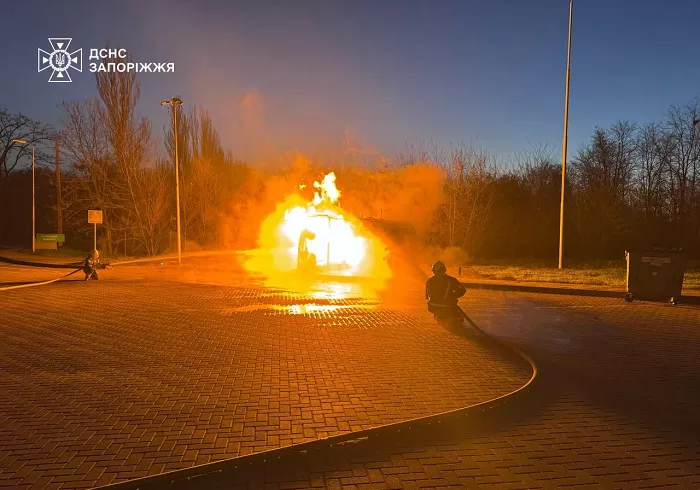Russian forces carried out drone attacks on Zaporizhzhia and nearby areas using first-person view (FPV) drones, the Main Department of the State Emergency Service in the Zaporizhzhia region reported.
In the city of Zaporizhzhia, one FPV drone struck the gas module of a civilian gas station, causing a fire that spread across approximately 20 square meters. Another drone targeted the nearby village of Stepnohirsk, hitting a multi-story apartment building. The resulting blaze affected the first and third floors, covering an area of around 100 square meters.
Local Telegram channels noted this was the first recorded FPV drone attack on the city of Zaporizhzhia, which lies far from the front line. This suggests Russia may have used a long-range FPV drone, possibly supported by a signal relay drone to maintain control over the extended distance.
While the exact drone type has not been confirmed, military observers believe it was likely a fixed-wing FPV drone, rather than the more commonly seen quadcopter type.
Ukraine Strengthens Civilian Defenses
As drone strikes on civilian areas remain a constant threat, Ukrainian forces have been expanding their defensive measures in cities. These include deploying electronic warfare systems and surveillance equipment.
Earlier this year, the Militarnyi news outlet reported on one such defensive system operating in Kherson, run by the 414th Separate Brigade, known as “Birds of Magyar.” The system tracks drones by intercepting their video transmissions. Once detected, the signal between the drone and its operator is jammed, causing the drone to lose control and crash.
Identifying the Attackers
On March 23, investigative journalists published findings on Russian commanders believed to be responsible for drone attacks on civilians in Zaporizhzhia and Kherson.
The investigation focused on Telegram channels frequently sharing drone strike footage, such as “Viking Squad,” “Light at the End of the Tunnel,” “Moses,” and “From Mariupol to the Carpathians.” Journalists named several Russian officers suspected of planning and executing these attacks.


